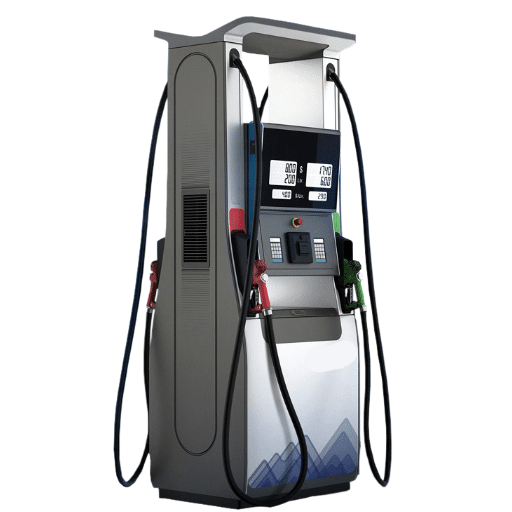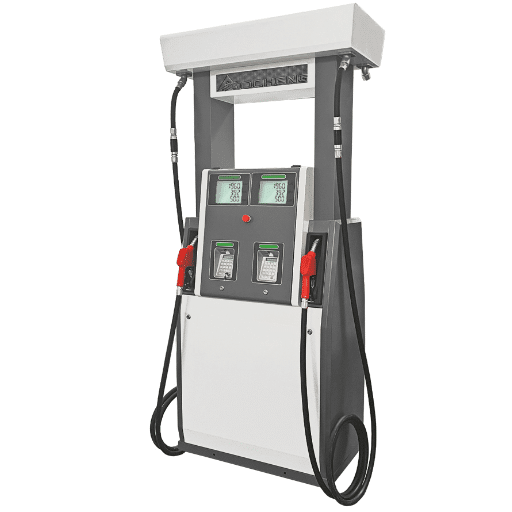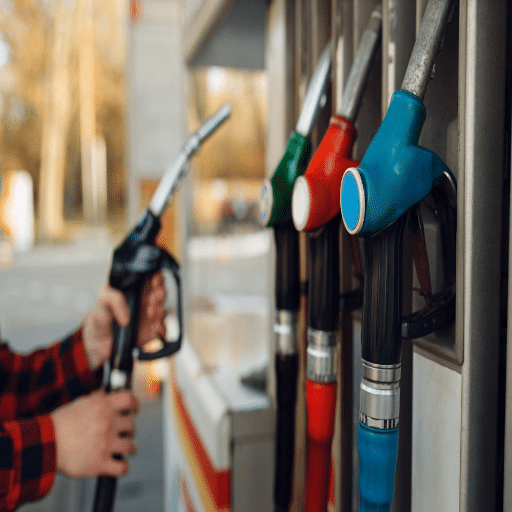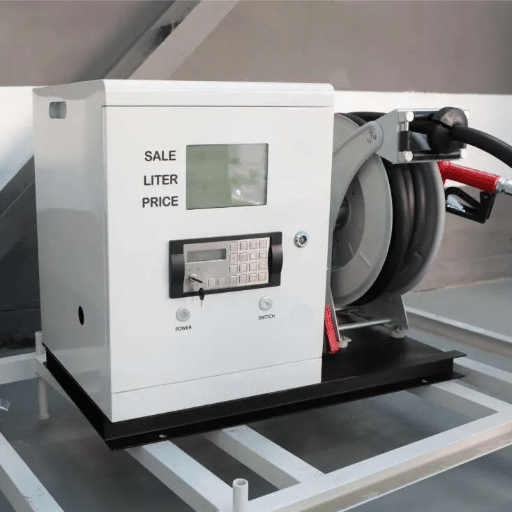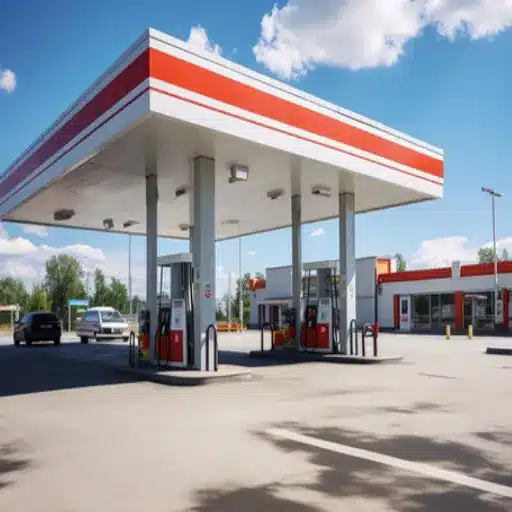A reliable source of light is indispensable for safety against hazards while working. Explosive atmospheres are commonly created in the oil and gas industries, chemical manufacturing, or mining-related activities, which require solutions that can withstand harsh and volatile conditions. Explosion-proof LED lighting fixtures make an excellent choice! These lighting systems have been designed with a focus on maximum safety and efficiency, while also prioritizing energy conservation and high performance. We will examine what makes the fixtures beyond a doubt suitable for very high-risk places, how they enhance the working safety of personnel, and how the technology behind the fixtures makes them durable and practical. Suppose you happen to be a safety manager, industrial engineer, or someone looking into new industrial trends. In that case, you’ll want to learn about how explosion-proof LED lights are transforming hazardous work environments.
Understanding Explosion-Proof Lighting
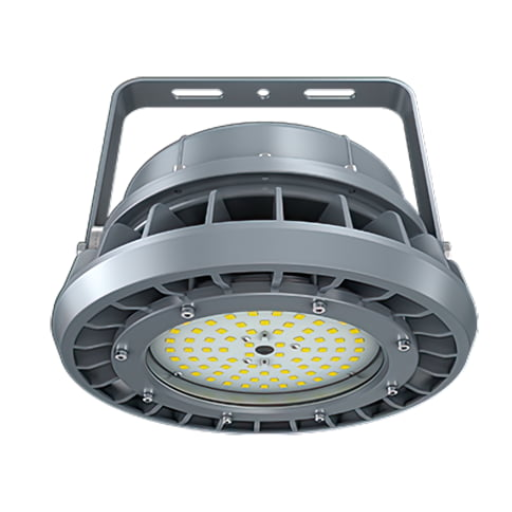
The term “Explosion-proof lighting” refers to special lighting arrangements that operate when flammable gases, vapors, or dust are present in the environment. They are designed to contain any sparks or heat that may lead to the ignition of hazardous materials, thus preventing explosions. Unlike standard lights, explosion-proof fixtures are enclosed in sturdy housings that are tightly sealed for safety and durability in challenging conditions. These are important in industries such as oil and gas, chemical processing, and mining, where workplace safety is of prime importance.
What are Explosion-Proof Light Fixtures?
Emission-proof lighting fixtures provide reliable and safe illumination in areas classified as hazardous due to the presence of flammable substances, such as gases, vapors, or combustible dust. These furnaces are constructed from rugged materials, such as stainless steel or aluminum, to withstand harsher conditions, vibrations, and even extreme temperatures.
They prevent any internal explosion from igniting the external atmosphere in the event of an accident, a beneficial feature. This is achieved through the use of rugged housings, which are considered tightly sealed but permit the effective dissipation of heat to ensure long-term performance. They employ the latest LED technology, which is completely energy-efficient while offering a high lumen output. This extended life reduces maintenance costs over time.
According to industry studies, LED explosion-proof lights have an operational life of 100,000 hours, which is five times that of traditional lights, such as incandescent or fluorescent ones. These fixtures are also engineered to comply with specific safety standards and are certified to certain standards, including ATEX (Atmospheres Explosibles) and UL (Underwriters Laboratories).
Such explosion-proof light fixtures find applications in oil refineries, chemical plants, and grain storage facilities—anywhere an explosion risk keeps safety issues ever-present. Apart from just safekeeping, these fixtures also enhance operational efficiency and comply with working regulations. For example, the use of explosion-proof lighting in the oil and gas sector has led to a reduction of up to 25% in workplace incidents, making lighting a key factor in industrial safety practices.
How Do Explosion-Proof Lights Work?
Explosion-proof lights are designed to operate safely in areas where flammable gases, vapors, or dust particles may pose a risk of ignition. Unlike conventional lighting systems, it is not the intention for these to deny any chance of explosion; they are engineered to contain any internal ignition from propagating into the adjacent atmosphere.
These lights have casings that are solid in construction, made from materials like aluminum, stainless steel, or reinforced glass, capable of withstanding pressure from a blast of considerable magnitude. The housings are sealed cumulatively to prevent the ingress of dust, vapor, or moisture, and often feature gaskets and flame-proof joints to ensure their integrity. Internal components such as wiring and bulbs are isolated to reduce the chance of sparking as well.
Explosion-proof lighting is made with the strictest safety standards. UL844, ATEX, and IECEx-style certifications verify its suitability for particular hazardous zones. For environments in Zones 1 and 2, where explosive gases are highly likely or occasionally present, explosion-proof lights have been found to reduce hazards significantly. Studies have shown that workplaces equipped with certified lighting systems have a minimum of a 30% reduction in ignition-related accidents. Additionally, such lights incorporate energy-efficient technologies, such as LED modules, that not only aid in illumination but also reduce heat generation, a crucial consideration in hazardous environments.
In general, due to its meticulous engineering and testing, explosion-proof lighting finds its relevance in fields where worker safety and operational reliability are key concerns, such as oil and gas, chemical processing, and mining.
Standards and Regulations for Hazardous Locations
Hazardous location standards and regulations are in place to ensure safety from fires and explosions while facilitating the smooth operation of industries dealing with flammable or combustible materials. These sets of rules vary in different parts of the world but generally adhere to a set of guidelines recognized globally.
A second commonly accepted standard is the series IEC 60079, issued by the International Electrotechnical Commission, which covers the design, construction, and utilization of equipment in explosive atmospheres. Additionally, it sets forth definitions for zones, describing the frequency and duration presence of a hazardous gas or dust such as Zone 0, where it is present continuously; Zone 1, where it is occasionally present; and Zone 2, where it is rarely present for gases, whereas for dust, the equivalent zones are termed Zone 20, Zone 21, and Zone 22. Equipment for each zone must comply with the defined requirements to prevent it from contributing to an ignition risk.
Another crucial regulation is the National Electrical Code (NEC), specifically Articles 500-506, which categorize hazardous classifications by Class, Division, and Group. For instance, Class I includes flammable gases or vapors; Class II, combustible dust; and Class III, ignitable fibers or flyings. Within each class, two divisions explain whether the hazardous material is present under regular conditions (Division 1) or only under abnormal conditions (Division 2).
The ATEX Directive, for the European Union, serves as the code for equipment and protective systems intended for use in explosive atmospheres. Equipment in hazardous locations shall carry the CE marking and the ATEX coding to denote compliance with health and safety standards. For example, recent ATEX certifications impose even stricter temperature control limitations further to reduce the risk of ignition from heat sources.
Statistical data is the bedrock for the importance of these regulations in the future. According to reports from industry players, over the last decade, explosions and fires in hazardous locations have declined, which is in line with the evolution of compliance and technologies that adhere to these criteria. For instance, incident risk has decreased by more than 40% in areas where modern IECEx-approved devices were used for servicing.
By implementing these stringent standards and regulations, industries can ensure that the health and safety of workers remain a top priority while optimizing performance and reducing insurance liabilities.
Types of Explosion-Proof LED Lights
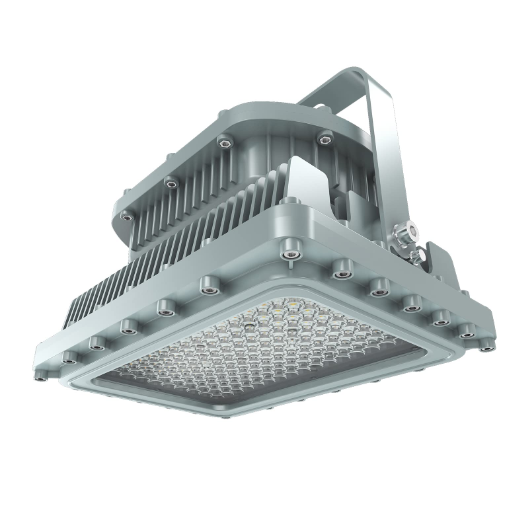
Explosion-proof LED lights are designed to operate safely in hazardous locations where flammable gases, vapors, or dust may be present. The common types include:
High Bay Explosion-Proof LED Lights: For extensive spaces in warehouses or other industrial facilities, they provide bright and efficient illumination at higher mounting points.
Flood Explosion-Proof LED Lights: For illuminating space widely over the hazardous landscape outside with safe and weather-resistant performance.
Linear Explosion-Proof LED Lights: For narrow spaces like tunnels or corridors, these lights provide excellent illumination while maintaining safety.
Portable Explosion-Proof LED Lights: For mobilizing and versatile use, they are particularly suitable as temporary lights during maintenance or inspection procedures.
Each is designed to meet the special demands of a specific application while efficiently guarding and serving in industrial and hazardous working environments.
LED Explosion-Proof Light Fixtures
LED explosion-proof luminaires offer numerous advantages in hazardous environments. They ensure safety and longevity in areas that contain explosive gases, chemicals, and dust. They consume less energy compared to incandescent lighting, with equal brightness. Additionally, since these fixtures have a longer lifespan, their maintenance is less, making them more economical in the long run.
The setting for this is installations in the oil and gas, chemical, and mining industries, as well as in areas with high hazards. They are built to satisfy stringent safety standards, with certifications such as ATEX and IECEx, thus complying with international regulations. Due to their robust design and greater versatility, LED explosion-proof lights can be fixed in factories or carried around for inspection and maintenance. The installation greatly benefits organizations in augmenting worker safety and providing illumination to some of the most challenging areas.
Comparing LED and Traditional Explosion-Proof Lights
Explosion-proof LED light fixtures include floodlights, linear lights, high bays, low bays, portable lights, flashlights, hand lamps, and spotlights.
|
Parameter |
LED Lights |
Traditional Lights |
|---|---|---|
|
Efficiency |
High |
Moderate |
|
Lifespan |
50,000+ hrs |
~10,000 hrs |
|
Heat Output |
Low |
High |
|
Energy Use |
Low |
High |
|
Durability |
High |
Moderate |
|
Certifications |
ATEX/IECEx |
Varies |
|
Light Quality |
Consistent |
Fluctuates |
|
Cost |
Higher upfront |
Lower upfront |
|
Maintenance |
Low |
High |
|
Eco-Friendly |
Yes |
No |
Applications of LED Explosion-Proof Lights
If hazardous flammable gases and vapors are present, the LED explosion-proof light should be used. They also allow for safety and provide efficient lighting. Some primary applications are:
The oil and gas industry primarily utilizes these devices in refineries, offshore drilling platforms, and petrochemical plants to ensure safety during operations, thereby preventing the ignition of flammable substances.
Chemical Processing Plants – These are ideal for plants involved with volatile chemicals, as they minimize spark and heat output while offering high-performance illumination.
Mining Operations – LED explosion-proof lights provide extremely tough and reliable light under the circumstances of underground mining, where explosive gases like methane are usual, thus providing safety for workers.
Food and Beverage Processing – Used in establishments where combustible dust or gas may be present, while meeting strict standards for hygiene and durability.
Pharmaceuticals – Safely illuminate areas of flammable chemicals or very sensitive manufacturing processes.
Marine and Shipyard-They find their frequent utilization in shipyards, docks, and vessels for working safety in areas with explosive risk.
Power Plants-Adequate for places like gas-fired and coal-fired power plants, where explosive conditions might exist, interior robust and efficient lighting solutions.
Said versatility, energy efficiency, and safety built into LED explosion-proof lights make them a necessity in all industries where dangerous working conditions exist.
Choosing the Right Explosion-Proof Light Fixture

A light fixture explosion-proof set into one by considering the following factors.
Hazardous Location Classification – Check the classification (Class, Division, or Zone) of the area to ascertain the provision in which the light fixture is to be installed.
Light Output and Efficiency – The fixture must deliver adequate lumens with the highest efficiency required for the area’s illumination.
Durability – Fixtures made of sturdy materials with corrosion resistance should be selected to endure the environmental conditions.
Certifications – The lights for adequate assurance of industry standards should be certified by an accepted safety organization.
Maintenance Requirements – Maintenance is to be kept to a minimum to avoid exorbitant downtime and costs.
Temperature Range – The light must operate efficiently within the expected temperature range in the hazardous area.
Going through these considerations would enable you to select a fixture that meets the safety and performance requirements of the particular application.
Factors to Consider When Selecting LED Explosion-Proof Lights
Choosing the perfect LED explosion-proof lights should guarantee reliability, efficiency, and suitability of the lights for a specific application. Here are some points that should help in making the decision:
Certification Compliance – Ensure that the lights have suitable certifications, such as ATEX, IECEx, or UL, so that they can be used safely and legally in hazardous environments. The certification ensures that the lighting has been tested for certain dangerous conditions.
Durability and Material Construction – Look for a fixture that can not only resist corrosion but also can stand extremely high temperatures and mechanical impacts. Aluminum or stainless steel are just some materials that offer such resistance. This way, the lights will be able to withstand harsh operating conditions.
Energy Efficiency and Longevity – Compared to traditional lighting solutions, LED explosion-proof lights are more energy-efficient. Verify that the lights produce the maximum lumens per watt while maintaining a long operational life to minimize energy consumption and reduce maintenance costs.
Ingress Protection (IP) Rating – Fixtures with high IP ratings, like IP65 or higher, offer dust-, water-, and element-proofing capabilities, which are all characteristics standard in hazardous areas.
Installation Requirements – Ease of installation and flexibility in mounting options shall be considered. Lights that offer multiple configuration options for mounting provide greater flexibility for use in various applications.
In addition to the factors mentioned before, these considerations will provide you with a comprehensive evaluation to help you select the best and most robust LED explosion-proof lighting that meets your exacting set of requirements.
Top Brands and Products in the Market
Several leading firms offer reliable solutions for explosion-proof LED lighting. A few noted industrial producers and their famous outputs are:
Dialight: Dialight is a global leader in industrial LED lighting, specializing in rugged, high-performance products. Vigilant® explosion-proof LED lighting fixtures offer unmatched durability and energy efficiency. These fixtures are ATEX and IECEx certified and are primarily used in the oil, gas, chemical, and mining industries.
Eaton Crouse-Hinds: The Crouse-Hinds series by Eaton provides lighting solutions designed for harsh environments and hazardous conditions. The Champ® VMV LED series offers reliable illumination in extreme conditions. Its long lifespan and greater resistance to corrosion help reduce maintenance.
ABB (Thomas & Betts): Renowned for its advanced design and adaptability, ABB’s explosion-proof lighting is the ideal choice for lighting hazardous locations. Their DTS-CE series is regarded as an industrial workhorse in various sectors, delivering superior performance under challenging conditions while still meeting industry standards.
R. STAHL: R. STAHL offers explosion protection in a wide range of products, including state-of-the-art LED lighting systems. The EXLUX 6001 series is widely distributed and is well-known for its durability and low power consumption, as it was designed to operate reliably in the most demanding environments.
Larson Electronics: Custom lighting solutions for hazardous locations. Their EPL-48-100LED series is renowned for its exceptionally high illumination levels and offers a range of mounting options to cater to various needs.
Shenzhen Nibbe: This is a rising name in the explosion-proof LED lighting market in Shenzhen, providing inexpensive yet reliable products. Their NBZD series safely offers high-quality performance, hence instilling in operators a genuine interest in saving money.
These brands continually invest in R&D efforts to enhance lighting efficiency, durability, and safety. Choosing from these established names guarantees that one is investing in technology specifically engineered to face the rigorous challenges of hazardous surroundings. Additionally, the products come with warranties and certifications that provide peace of mind to prospective equipment operators.
Installation and Maintenance of Explosion-Proof Lighting

The installation and maintenance of explosion-proof lighting should be guaranteed to ensure maximum safety and efficiency. Always install in strict accordance with the manufacturer’s instructions. All components must be properly fitted into their designated places to avoid potential hazards. Correct tools and equipment must be used when installing the lighting, and it must be confirmed that the lighting is suitable for the classified hazardous area.
For maintenance, periodically check the light for signs of wear, tear, or rust. Ensure connections are always tight, replace faulty parts with certified replacements, and clean the fixture periodically to prevent dirt and debris from hindering operation. Before commencing any maintenance work, ensure the power to the lighting is turned off. Call an expert technician if required to maintain safety standards.
Best Practices for Installing Explosion-Proof Fixtures
The installation of explosion-proof fixtures requires careful planning and consideration of safety standards to prevent dangers in areas with explosive atmospheres. Below are some best practice guidelines:
Understand Hazardous Area Classification: Identify the hazardous zone, gas grouping, and temperature class of the installation area so that any given fixture is certified for those particular conditions. The classification also serves to determine the level of protection required against potential ignition sources.
Choose Certified Fixtures: In all cases, select the fixture that has been certified by a recognized testing authority, such as UL, IECEx, or ATEX. Such certification ensures taming the safety and performance standards required strictly for environments prone to explosion.
Use Proper Installation Techniques: Follow the manufacturer’s installation instructions for the fixtures, including sealing of cable entries, grounding of the system, and the use of conduits and fittings approved against the ingress of hazardous substances.
Maintain Equipment Integrity: Regularly check the fixture for cracks, loose connections, or damage. Ensure that all screws, covers, and seals are tightly in place and do not expose the internal elements to the external atmosphere.
Follow Local Regulations: Installation should always comply with local electrical codes and standards to ensure safety. If necessary, refer to a licensed professional for design, installation, and certification.
Observing the above can help ensure the safe operation and management of explosion-proof lighting installations, thereby maintaining their safety and compliance with industry regulations.
Maintenance Tips for Longevity and Safety
Regular Inspections: Conduct periodic inspections to identify any wear, corrosion, or damage to explosion-proof lighting. Check for loose fittings or broken seals that may compromise safety.
Clean Lighting Fixtures: Dirt and debris would decrease the efficiency and working of lighting. Use nonabrasive cleansing methods and approved agents to maintain the lighting’s peak performance.
Checking the Seals and Gaskets: Ensure that the seals and gaskets are intact and properly fitted. These ensure that no corrosive substances enter the fixture.
Replace Damaged Parts Immediately: Any damaged or deteriorated parts should be replaced with certified explosion-proof components immediately. Using an improper kind of part may lead to the system being unsafe and unreliable.
Check Electrical Connections: These electrical connections must be tightened and checked regularly for signs of overheating or short circuits. Poor connections can pose a safety risk and lead to a loss of efficiency.
Through performing these maintenance practices, explosion-proof lighting systems achieve their durability and safety, and their regular maintenance leads to a longer lifespan, making them operational in hazardous environments and ensuring reliability.
Common Issues and Troubleshooting
As with explosion-proof lighting systems, specific common issues may arise that may affect their performance and safety. Resolving such problems through detailed troubleshooting steps will guarantee smooth and reliable operation:
Loose electrical connections: sudden voltage fluctuations, or aging parts such as LEDs or ballasts can cause flickering or dim lighting. As a solution, verify that all connections are secure and that the power supply is free from disturbances. If the issue remains, any faulty parts should be replaced. Studies have shown that if electrical connections are correctly maintained, flickering will irritate the user almost 30% less.
Overheating: Incompatible light fixtures, high temperatures, or blocked vents may lead to overheating. One must ensure that the lighting used is appropriate for the specific hazardous environment and is installed according to the manufacturer’s recommendations. Cleaning vents and maintaining proper airflow is significant in preventing heat-related problems. The data says that with adequate airflow management, the lifespan of these components is increased by a factor of 40%.
Moisture or Dust Intrusion: Explosion-proof lighting systems are designed to keep out moisture and dust with their seals, but there may be instances of wear and tear or faulty fitting. One must inspect the seals and gaskets regularly, replacing those that are worn out or incorrect, and reinstall them to restore the fixture’s IP rating. These activities ensure that the system remains dependable even in harsh environments.
Corrosion of Components: High humidity or corrosive chemicals can lead to corrosion. Fixtures that can resist corrosion in such an environment would be made of stainless steel or other special coatings. Routine cleaning prevents corrosive elements from taking effect, thereby extending the system’s lifespan.
Addressing common problems promptly and implementing preventive maintenance, the lighting system can maintain predetermined efficiencies and remain safe even in harsh environments.
Benefits of Using LED Explosion-Proof Lights
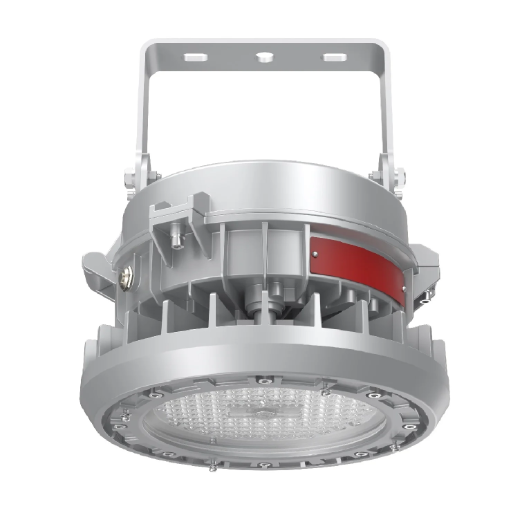
One of the main advantages of using LED explosion-proof lights in hazardous environments is their great utility. They are energy-efficient, meaning they consume less electricity compared to traditional lighting systems, which helps in cost savings along the way. They also have a longer life, which means less replacement and maintenance. These lights produce less heat from the emission end, making them safer to use in volatile conditions. On the other hand, the brightness is uniform and sufficiently bright to ensure good visibility in key work areas. Being rugged, these lights will withstand environmental factors and perform with excellent reliability in challenging settings.
Energy Efficiency and Cost Savings
LED explosion-proof lighting systems are highly popular for their energy efficiency, as they consume significantly less energy than conventional lighting options, including incandescent and fluorescent lighting. Lower power consumption translates to lower electricity bills, making it a cost-effective alternative in industries. Moreover, due to its longer lifespan, it substantially reduces maintenance and replacement costs over time, consequently lowering the total cost of ownership. Hence, such lights are highly efficient in minimizing energy waste because they convert nearly all electricity into light with minimal heat. In the long run, LED explosion-proof lighting supports sustainable growth while ensuring a rapid return on investment for businesses in high-traffic operational environments.
Enhanced Safety in Hazardous Areas
Of course, I rely on LED explosion-proof lights to enhance safety in hazardous environments, as they withstand extreme conditions and provide illumination that is worthy of the biggest names. The lights carry their self-start-up jobs by not sparking when switched on or overheating; hence, the possibility of fire or explosion is significantly reduced in the presence of flammable gases, vapors, and dust. Their very hardy build means I am at peace about upholding safety in the working zone.
Durability and Lifespan of LED Fixtures
LED fixtures rank among the most durable and longest-lasting lighting fixtures compared to traditional lighting arrangements. Constructed using solids, these components offer high resistance to shocks, vibrations, and temperature extremes, making them suitable for harsh industrial and outdoor environments. On average, LED lamps have a lifespan of 25,000 to 50,000 hours or even longer, significantly reducing the need for maintenance. LEDs do not have filaments or gases that wear out quickly, as in conventional bulbs. Instead, unlike standard bulbs, which suddenly fail with bright light, LED lights dim gradually over time due to lumen depreciation. With such long-term reliability, LED fixtures serve as a cost-effective lighting system, offering energy efficiency and making them application-friendly.
Reference Sources
Different Protection Modes of Ex LED Luminaires
Lighting Practices and Applications in Hazardous Areas
Frequently Asked Questions (FAQs)
What are explosion-proof light fixtures, and where are they used?
Explosion-proof light fixtures are specially designed lighting solutions that prevent the ignition of flammable gases or vapors in hazardous environments. These fixtures are commonly used in industrial settings, such as oil refineries, chemical plants, and warehouses, where the presence of combustible materials poses a risk of explosion. By utilizing durable materials and specific construction techniques, explosion-proof fixtures ensure safety in hazardous locations.
How do LED explosion-proof lights differ from traditional explosion-proof lights?
LED explosion-proof lights are energy-efficient alternatives to traditional lighting solutions. They provide brighter illumination with lower energy consumption, producing less heat and extending the lifespan of the fixtures. Unlike conventional incandescent or fluorescent lights, LED explosion-proof lights are designed to withstand harsh conditions, making them ideal for use in hazardous locations.
What types of hazardous location lights are available?
Hazardous location lights come in various types, including high-bay lights, floodlights, and shop lights, each designed for specific applications. High bay lights are suitable for warehouse lighting, while flood lights provide area lighting for larger spaces. Shop lights are often used in workshops and garages. Each type is designed to meet the stringent safety standards required for Class I, Division 1 or Class II, Division 1 environments.
What are the lighting requirements for hazardous areas?
Lighting requirements for hazardous areas depend on the classification of the space. For instance, Class 1 Division 1 areas require explosion-proof lighting that can operate safely in the presence of ignitable gases. Similarly, Class I, Division 2, and Class II, Division 1 areas have specific requirements that must be met to ensure safety. Understanding these requirements is essential when selecting appropriate explosion-proof light fixtures.
How can I ensure safety in hazardous environments with lighting?
To ensure safety in hazardous environments, it is crucial to use explosion-proof lighting that meets the necessary standards for the specific class and division of the area. Using fixtures explicitly designed for hazardous locations, such as LED explosion-proof lighting, can significantly reduce the risk of accidental ignition. Regular maintenance and inspections of the lighting fixtures are also vital to ensure their ongoing safety and functionality.
What is the importance of proof lighting for hazardous areas?
Proof lighting for hazardous areas is crucial in preventing accidents and ensuring worker safety. These fixtures are engineered to contain explosions within the enclosure and prevent the escape of flames or sparks. Utilizing proof light fixtures in hazardous locations minimizes the risk of fires and explosions, protecting both personnel and property in industrial settings.
Can LED flood lights be used in hazardous locations?
Yes, LED flood lights can be used in hazardous locations if they are specifically designed and rated as explosion-proof. These fixtures provide high-intensity illumination while ensuring safety in environments where flammable gases or dust may be present. When selecting LED floodlights for hazardous locations, it is essential to verify that they meet the relevant safety certifications.
What are the benefits of using vapor-proof lights?
Vapor-proof lights are designed to prevent moisture and dust from entering the fixture, making them ideal for use in damp or dirty environments. The benefits of using vapor-proof lights include enhanced durability, reduced maintenance needs, and improved safety in hazardous areas. These lights are particularly useful in industrial settings, warehouses, and outdoor applications where exposure to the elements is a concern.

